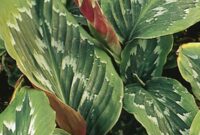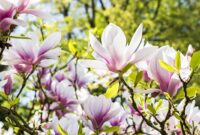I. Getting to Know Philodendron Little Hope
Welcome to the world of Philodendron Little Hope—a delightful houseplant that’s perfect for beginners and experienced plant enthusiasts alike. In this beginner’s guide, we’ll take you on a journey to discover the beauty and charm of this remarkable plant.
Meet Philodendron Little Hope
At first glance, Philodendron Little Hope immediately captivates with its striking appearance. This charming plant is characterized by its heart-shaped, glossy green leaves that bring a touch of the tropics into your home.
The vibrant, deep green foliage and its compact size make it an ideal choice for those looking to add a touch of greenery to their living spaces without overwhelming them.
Why Philodendron Little Hope is Perfect for Beginners
One of the key reasons why Philodendron Little Hope is a favorite among beginners is its resilience and adaptability.
It’s forgiving of occasional lapses in care, making it an excellent choice for those just starting their plant-parenting journey. Whether you have a green thumb or are a self-proclaimed plant novice, this charming Philodendron will thrive with a little TLC.
Charming Characteristics
Beyond its easy-going nature, Philodendron Little Hope offers a host of other charming characteristics:
- Air Purification: Like many houseplants, Philodendron Little Hope helps improve indoor air quality by filtering out common pollutants, ensuring you breathe fresher air.
- Low Maintenance: Minimal care requirements mean you can enjoy the beauty of this plant without feeling overwhelmed by complex care routines.
- Versatile Decor: Its compact size and attractive foliage make it a versatile addition to any room, whether you’re looking to enhance your bedroom, living room, or office space.
- Growth Potential: As Philodendron Little Hope matures, its trailing vines add a touch of elegance to hanging baskets or shelves.
In the sections that follow, we’ll delve deeper into the specifics of growing and caring for Philodendron Little Hope.
From ideal growing conditions to propagation tips, we’ve got you covered on your journey to becoming a successful Philodendron parent.
So, whether you’re a seasoned plant enthusiast or a complete novice, get ready to unlock the secrets to cultivating and caring for Philodendron Little Hope—a plant that’s as charming as it is resilient.
II. Plant Profile
In this section, we’ll take a closer look at the distinctive characteristics of Philodendron Little Hope and uncover its origins in the lush landscapes of tropical regions.
Key Features and Appearance
Philodendron Little Hope, also known by its scientific name Philodendron bipinnatifidum, is a stunning houseplant that stands out for its unique features. Here’s what you can expect:
- Heart-Shaped Leaves: The most striking feature of Philodendron Little Hope is its lush, heart-shaped leaves. They are typically deep green and have a glossy, almost waxy appearance, which adds to their appeal.
- Compact Size: As its name suggests, this variety of Philodendron stays relatively small compared to some of its relatives, making it an excellent choice for homes with limited space.
- Growth Pattern: Philodendron Little Hope exhibits a bushy growth pattern with its leaves radiating from a central point, giving it a neat and symmetrical appearance.
Native Habitat and Origins
To truly appreciate Philodendron Little Hope, it’s essential to understand its origins. This delightful plant hails from the tropical rainforests of Central and South America, where it thrives in the warm and humid climate beneath the forest canopy.
In its native habitat, it can often be found growing as an epiphyte, clinging to trees and rock surfaces.
The lush rainforests of its origin provide insights into the plant’s preferred growing conditions, which we’ll explore in more detail later in this guide.
The adaptability of Philodendron Little Hope to indoor environments is a testament to its ability to bring a touch of the exotic rainforest into your home.
Now that you’re acquainted with the distinctive features and origins of Philodendron Little Hope, let’s move on to the practical aspects of caring for this charming plant.
In the following sections, we’ll delve into the ideal growing conditions, watering techniques, maintenance tips, and even propagation methods to ensure your Philodendron Little Hope thrives in its new home.
This section provides readers with a deeper understanding of Philodendron Little Hope’s physical characteristics and its natural habitat, setting the stage for the care instructions that follow in the blog.
III. Care Basics
Now that you’re acquainted with Philodendron Little Hope’s charming qualities and origins, it’s time to dive into the essential care basics that will help your plant thrive. From lighting to humidity and pot selection, we’ve got you covered.
1. Light Requirements
Proper lighting is crucial for the well-being of your Philodendron Little Hope. Here’s what you need to know:
- Indirect Light: Philodendron Little Hope prefers bright, indirect sunlight. It thrives when placed near a window where it can receive filtered sunlight or dappled shade.
- Avoid Direct Sun: While it enjoys good light, direct sunlight can scorch its leaves. Protect it from intense, direct rays to prevent leaf damage.
2. Temperature and Humidity
Creating the right climate for your Philodendron Little Hope is essential. Here are the ideal temperature and humidity conditions:
- Temperature: Keep your plant in a warm environment, ideally between 65°F to 80°F (18°C to 27°C). Avoid exposing it to cold drafts or temperature extremes.
- Humidity: This tropical plant loves humidity. Aim for a relative humidity level of around 60% or higher. If the air is dry, consider using a humidifier or misting the leaves occasionally.
3. Soil and Pot Selection
The soil and pot you choose play a vital role in your plant’s overall health. Here’s what you need to consider:
- Well-Draining Soil: Philodendron Little Hope prefers a well-draining potting mix. A mix of peat moss, perlite, and a touch of organic matter provides the ideal balance of moisture retention and drainage.
- Choosing the Right Pot: Opt for a pot with drainage holes to prevent overwatering and root rot. Make sure it’s not too large, as Philodendron Little Hope likes a snug fit.
- Repotting: As your plant grows, you may need to repot it every couple of years to provide more space for its expanding root system. Spring is an excellent time for repotting.
By paying attention to these care basics, you’ll set a strong foundation for the healthy growth of your Philodendron Little Hope.
IV. Watering and Maintenance
Caring for your Philodendron Little Hope doesn’t stop at providing the right environment. Proper watering and regular maintenance are essential for keeping this charming plant happy and healthy.
1. Watering Techniques and Frequency
When it comes to watering Philodendron Little Hope, less is often more. Here’s how to get it right:
- Moderate Watering: Allow the top inch or two (2.5 to 5 cm) of the soil to dry out between waterings. Stick your finger into the soil, and if it feels dry, it’s time to water.
- Avoid Overwatering: One of the most common mistakes is overwatering. Philodendron Little Hope is more tolerant of drought than excess moisture, so be mindful not to drown its roots.
- Water Quality: Use room-temperature, distilled, or filtered water to prevent mineral buildup in the soil, which can harm your plant over time.
2. Maintenance Tasks
Maintaining the appearance and health of your Philodendron Little Hope is relatively straightforward. Here are some key tasks:
- Pruning: Regular pruning helps shape your plant and remove any yellowing or damaged leaves. Use clean, sharp scissors or pruning shears to make clean cuts.
- Cleaning: Dust can accumulate on your plant’s leaves, affecting its ability to photosynthesize effectively. Gently wipe the leaves with a damp cloth to keep them clean and free from dust.
- Pest Inspection: Periodically check for common houseplant pests such as spider mites or mealybugs. If you notice any infestations, take appropriate action to remove them promptly.
- Support for Growth: As your Philodendron Little Hope grows, you may need to provide support for its trailing vines using stakes or trellises. This ensures your plant maintains an attractive shape.
By mastering the art of watering and keeping up with these straightforward maintenance tasks, you’ll not only keep your Philodendron Little Hope looking its best but also promote its overall well-being.
In the following section, we’ll explore propagation techniques, allowing you to expand your Philodendron Little Hope family or share this delightful plant with friends and fellow plant enthusiasts.
V. Propagation
Watching your Philodendron Little Hope thrive and grow is undoubtedly rewarding. If you’re keen to expand your plant collection or share this charming plant with friends and family, propagation is the way to go
1. Why Propagate Philodendron Little Hope?
Before we dive into the how-to of propagation, let’s quickly consider why you might want to propagate your Philodendron Little Hope:
- Create More Plants: Propagation allows you to create new Philodendron Little Hope plants, essentially cloning the original.
- Share the Joy: Sharing a propagated plant with friends or loved ones is a thoughtful gift, spreading the joy of plant parenthood.
- Refresh Aging Plants: If your mature Philodendron Little Hope is getting leggy or losing its vitality, propagating fresh cuttings can rejuvenate your collection.
2. Propagation by Stem Cuttings
Stem cuttings are one of the simplest and most reliable methods of propagating Philodendron Little Hope. Here’s a step-by-step guide for beginners:
Materials You’ll Need:
- Healthy Philodendron Little Hope plant
- Sharp, clean scissors or pruning shears
- Small pots or containers
- Well-draining potting mix
Step-by-Step Propagation:
- Select a Healthy Stem: Choose a healthy stem with at least a few leaves. Ideally, it should be free from any signs of disease or damage.
- Take the Cutting: Using clean scissors or pruning shears, cut a 4 to 6-inch (10 to 15 cm) section of the stem just below a leaf node. A leaf node is the point where a leaf attaches to the stem.
- Remove Lower Leaves: Gently remove the leaves from the lower half of the cutting, leaving a few leaves at the top intact.
- Allow to Callus: Place the cutting in a dry, shaded spot for a day or two to allow the cut end to callus. This helps prevent rot when planting.
- Plant the Cutting: Plant the callused end of the cutting in a small pot filled with well-draining potting mix. Make a small hole with your finger or a stick and insert the cutting about an inch (2.5 cm) deep.
- Provide Adequate Moisture: Water the cutting lightly, and then cover it with a plastic bag or a clear plastic dome to create a mini greenhouse effect. This helps maintain humidity around the cutting.
- Place in Indirect Light: Put the potted cutting in a location with bright, indirect light. Avoid direct sunlight, which can scorch the tender cutting.
- Monitor Growth: Over the next few weeks, monitor the cutting for signs of new growth. Once you see new leaves emerging, you can remove the plastic covering.
- Transplant as Needed: Once the cutting has established roots and grown into a small plant, you can transplant it into a larger pot with the same care routine as your mature Philodendron Little Hope.
Propagation by stem cuttings is a rewarding process that allows you to multiply your Philodendron Little Hope collection.
Remember to be patient, as it may take a few months for your propagated cutting to become a mature plant.


